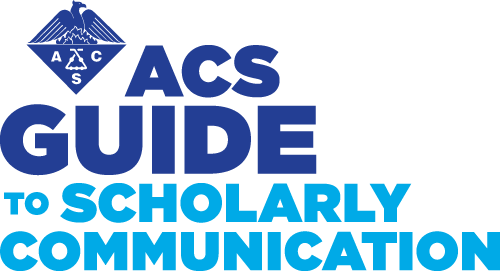
Note: CHECK WITH YOUR INSTRUCTOR FOR THEIR PREFERRED WRITING STYLE. Use any materials and templates they provide for specific assignments.
In general, chemistry students and scholars follow The ACS Guide to Scholarly Communication from the American Chemistry Society for formatting papers, use of language, and citations. Use the ebook and the examples on the ASC Style Quick Guide for formatting in ACS style.
Although other styles may be used including
If writing for publication, check the journal for their submission guidelines.
 The ACS guide to scholarly communication
by
American Chemical Society
The ACS guide to scholarly communication
by
American Chemical Society
The ACS Inclusivity Style Guide was developed by the American Chemical Society to help people communicate in ways that recognize and respect diversity in all its forms.
General Guidelines
Inclusive language, also referred to as bias-free language, is language that avoids excluding or alienating people because of race, gender identity, disability, education level, socioeconomic status, or any other factor. The Linguistic Society of America says, “Inclusive language acknowledges diversity, conveys respect to all people, is sensitive to differences, and promotes equal opportunities.”
Research has shown that stereotyped language can do harm. In contrast, more inclusive language can create positive change (for example, more gender-neutral language can reduce bias). Inclusive language and images make content more accurate and ensure that it finds the widest possible audience.
Inclusive communication also supports the American Chemical Society’s core value of diversity, equity, inclusion, and respect and its strategic goal 5, “Embrace and advance inclusion in chemistry”.
The following guidelines may change over time, as language is always evolving, and what is acceptable phrasing today may not be in the future. ACS will alter language guidance as needed for accuracy, fairness, and respect for audiences. In addition, this guide does not cover all topics related to inclusive language. When this guide conflicts with other style guides, follow this guide on matters of inclusive language and images.
Read the entire chapter on inclusive language in The ACS Inclusivity Style Guide.
copied from: ACS INCLUSIVITY STYLE GUIDE (This is an open access chapter published under an ACS AuthorChoice License, which permits copying and redistribution of the chapter or any adaptations for non-commercial purposes.)
Use the following tools to help with your writing.
If you are trying to keep track of all the books, articles and other sources for your projects, a citation management program can help. Zotero is a free program to help you collect, organize, cite, and share research. This guide will help you understand Zotero's function and get the program set up for use on your device.
